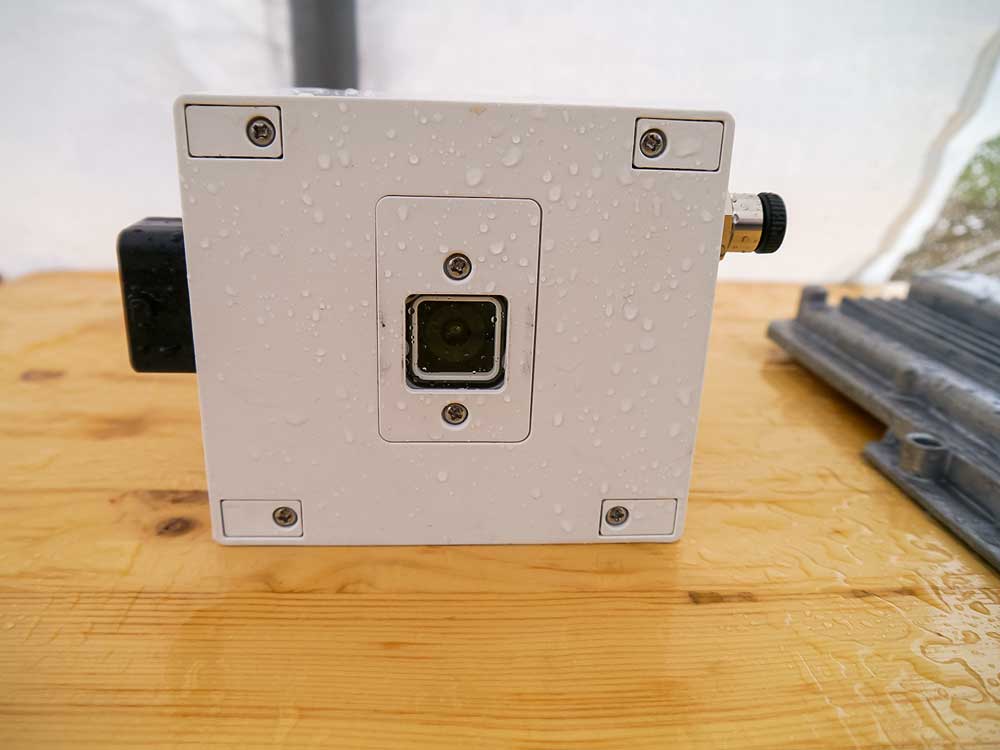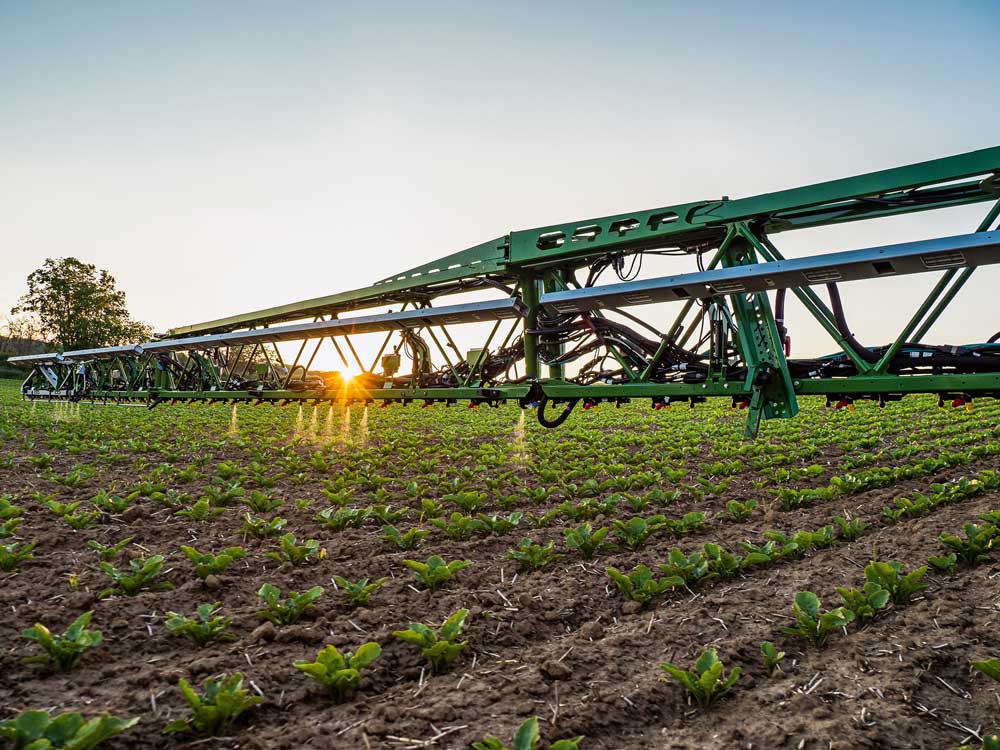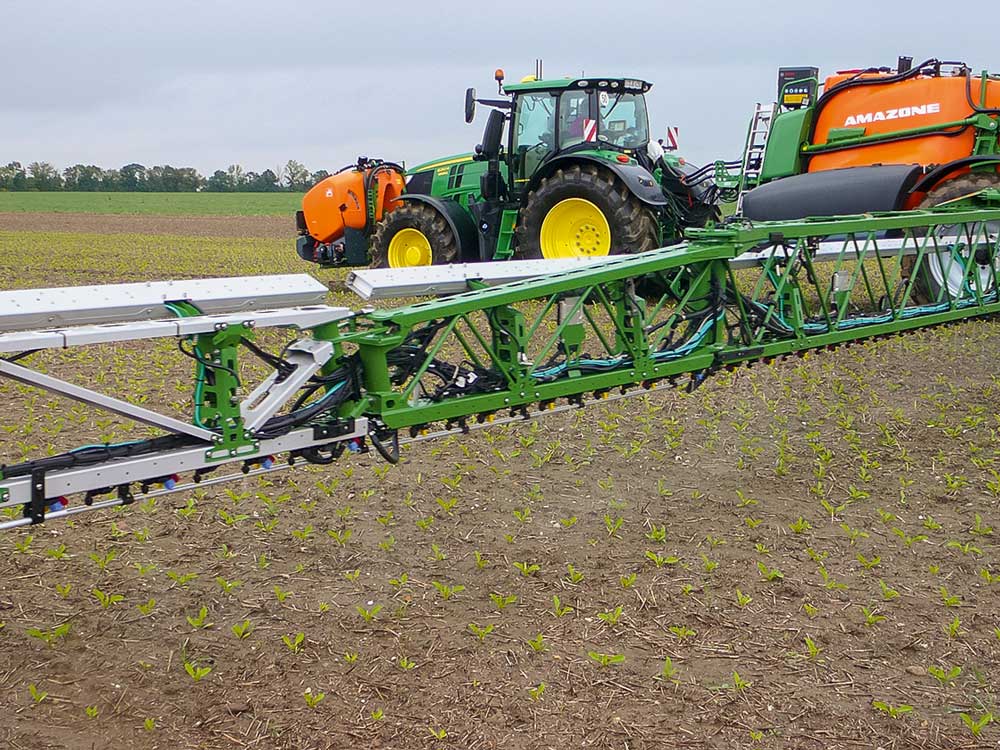Smart spraying: Digitalisation becomes automation
By Thomas Preusse, DLG Mitteilungen
Smart spraying is the name of one of the solutions in which digitalisation becomes automation. The initial goal in Germany is the precise application of foliar herbicides in row crops (and soon rape in wide rows). The necessary camera technology comes from Bosch, the agronomic decision-making algorithms from BASF-xarvio. Bosch and BASF have founded a joint venture for this purpose in 2021.
Individually switched PWM valves and special spot-fan nozzles from Agrotop with a spacing of 25 cm should be able to save up to 70 % of the amount of fertiliser at working speeds of up to 12 km/h. The boom is equipped with camera and light sensors. Camera and light modules are integrated in the boom, which have a "reaction speed" of only 65 milliseconds. This requires both active boom guidance and vibration damping in order to be able to guide the nozzles exactly 50 cm above the ground and also to exclude horizontal movements.
Early detection of weeds
The image recognition system shows existing weeds at a very early stage of growth. In the row, they are detected when their size differs significantly from that of the crop. The LED light technology assists with shadows and also at night. Compared to satellites and drones, the system is of course more complex because there is a separate camera for every four nozzles (i.e. per metre of working width). But it recognises plants in the millimetre range and makes real-time applications possible.
An "early" technology partner is Amazone. There, one can imagine Smart Spraying being used in very different ways: as a stand-alone solution or in parallel to conventional surface spraying. That will also depend on the area of application. Smart Spraying can, of course, only be realised with foliar herbicides: A weed, no matter how small, must first be present. This corresponds to the logic of not treating preventively and, if so, then according to damage thresholds.
In the reality of Central European arable farming it will hardly be possible to implement this "flawlessly", Stefan Kiefer from Amazone also knows. In sugar beet, for example, a first surface spray is "compulsory". The further treatments, however, can be related more than before to the specific weed occurrence. Also in maize, where soil herbicides play a major role, there are application restrictions or a combination of area and spot spraying is necessary.
From the project phase to practice
The project phase is over, says Kiefer. Now it's time for practice. And that may certainly hold one or two surprises and the need for adaptation. Assuming that a sprayer equipped for both smart spraying and surface spraying can easily cost twice as much as a previous one, this technology is not a general solution for every farm. On the contrary, specific profitable applications will emerge (also regionally). It can already be said that the advantage is greater in wetter regions and years, and perhaps greater for beet than for maize, because the herbicides are simply more expensive. Likewise, of course, a good utilisation rate is necessary to cover the costs. It is possible that a farm will not initially buy such a machine itself, but will lease it from the manufacturer. And of course the excellence will also increase with increasing political "caps" on crop protection.
"Agronomic decision engine"
The decisive factor is the basis for decision-making. In addition to the technical basis, the actual dimension of smart spraying is the question of which agents are used when and in which application rate. This, or rather the algorithms required for it, are based on three parameters: threshold values (need for control), timing depending on the growth of the weeds (as much efficiency with as little application rate as possible) and framework conditions (problem weeds, resistances). The whole concept is referred to as an "agronomic decision engine".
The role of the farmer
At this point at the latest, many farmers are likely to start asking questions: What is the basis for the decisions that the system provides? Are they better than those based on personal experience? In principle, the algorithms obtained in trials on "real fields" over the past few years are still being "trained", say Silvia Cifre-Wibrow and Florian Gwosdz from Bosch BASF Smart Farming GmbH. They are ready to recognise the relevant weeds. Nevertheless, interested farmers should not be left to their own devices when deciding on spraying. They can configure their own tolerance threshold and should receive support if something goes wrong. It is also important for the future to be able to understand why the algorithm made a certain decision. This may reveal connections that the farmer has not seen before.
All this data (for example, weed maps) is bundled on the Xarvio Field Manager platform. In this way, "historical" data can also be passed on to a new farmer when an area is transferred, thus increasing its value even further.
Conclusion
"Smart spraying" is a continuation on a new technological level of a process that began 40 years ago with weed control based on damage thresholds, but was never able to establish itself in widespread practice. Even with automatic weed detection and algorithms, everything will not change overnight now: suppliers are talking about a gradual market launch from next year.





